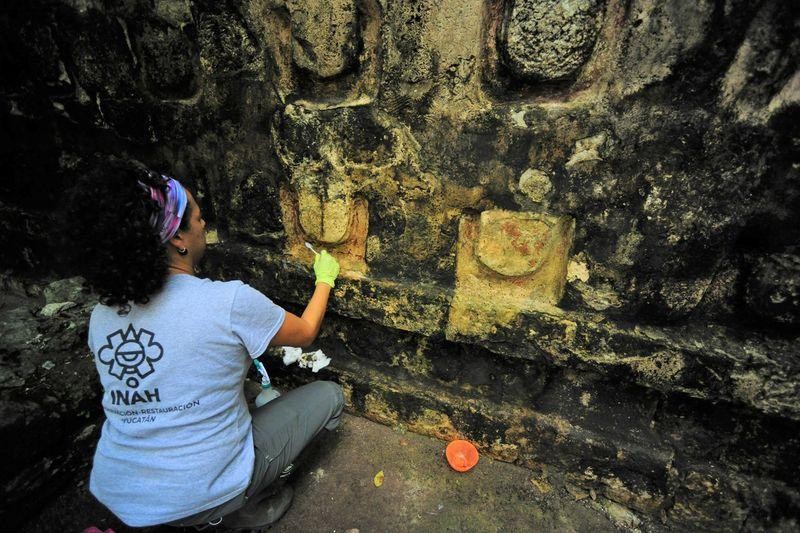Archaeologists Discover Ancient Mayan Palace

Every year, archaeologists discover new artifacts and remains of history from around the world. This helps to uncover the mysteries of the world and answer some questions that somehow confuse those who are searching for the truth.
Historical artifacts are very important, much like literature, because it speaks about life in the classical period. It also gives ideas about how people behaved and lived thousands of years ago. By discovering ancient artefacts and ruins, we get a glimpse of the past and its rich history. This is why the discoveries of archaeologists are indeed very important and it could also be a key turning point in one's belief and history.
According to archaeologists from Mexico's National Institute of Anthropology and History they have discovered an ancient palace in the city of Kuluba, which is near present day's tourist hotspot of Cancun in eastern Mexico. Experts believe that the palace was occupied by the Mayan elites more than 1,000 years ago or during the time period of 600 AD to 1050 AD. It is also believed that the place was abandoned due to political or environmental factors.
In a report from Remezcla, the ancient palace is estimated to be around 19.6 feet tall and 49 feet wide. The structure consists of pillars, stairways, a basement and more. In addition, in another article from the Smithsonian Magazine, Emma-Graham Harrison from the Guardian said that the ancient Mayan Palace also consists of six rooms, two residential rooms, an altar, and an oven.
Mexico's National Institute of Anthropology and History said that there were remains of individuals who were present during the excavation of the palace. Archaeologists and experts hope that this would shed light on people who once lived and occupied the modern city of Kuluba.
It is believed that the first era of habitation in Latin America happened during the Classic Period when ancient peoples occupied a space of territory across Mexico, Guatemala, and northern Belize. During their stay, they built cities and their population surged to more than 19 million.
However, researchers also believed that around 900 AD many of the major Mayan cities had collapsed for reasons that are not yet clear. Experts speculate that extreme drought or climate change, warfare, and the change of trade patterns are most likely to be the factors that led to the collapse of the empire.
According to an article from History.com, cities in the southern lowlands of Guatemala, Mexico, Belize, and Honduras did not simply vanish after their empire fell. It is believed that during the 10th century, a city in the Yucatan state, which is the Chichen Itza, has shown signs that it was taken over by warriors of the Toltec people. And according to archaeologists, Kuluba may have been under the control of the Itza.
The discovery of the Mayan palace and other archaeological artifacts around the place may the key to attract more visitors as well.
Subscribe to Latin Post!
Sign up for our free newsletter for the Latest coverage!

















